See Past Simple, Simple Past Tense of See Past Participle, V1 V2 V3
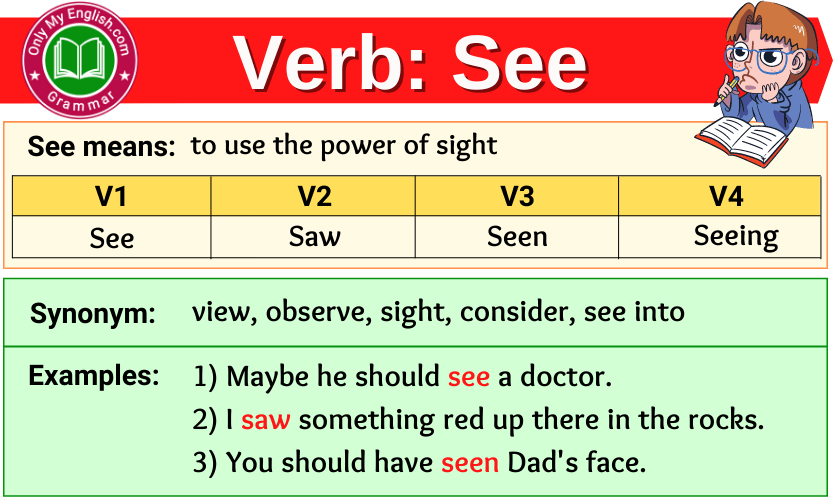
See Verb Forms Past Tense, Past Participle & V1V2V3 »
see - model verb Verbs that follow this model: foresee oversee sightsee Firefox and Chrome users: install a shortcut. infinitive: present participle: past participle: (to) see seeing seen: definition: in Spanish in French in Italian: Open All Desktop View. Indicative. present.
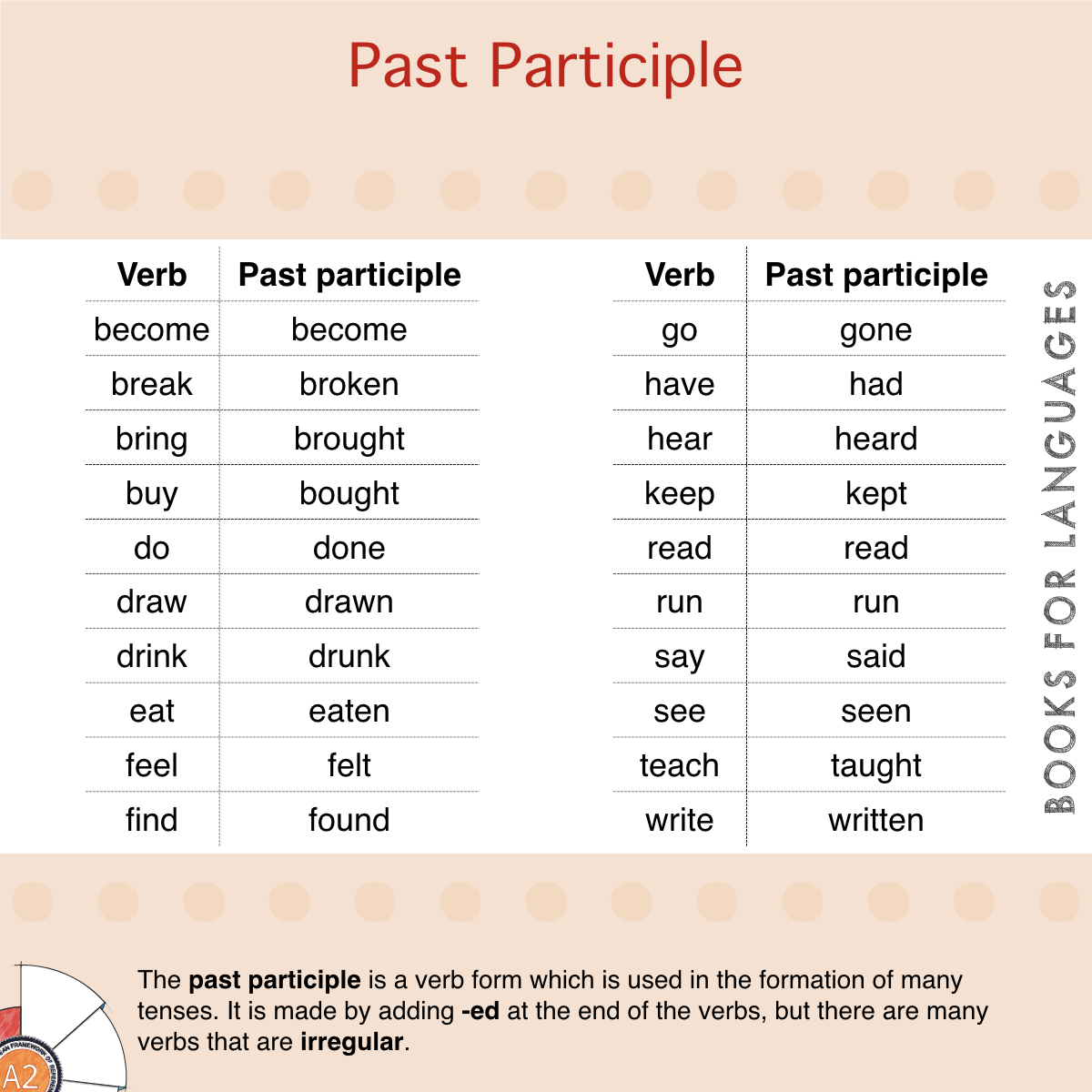
Past Participle Of Grammar Slide Elements
The irregular verbs in the table below have the same pattern as see. They are: - Verbs with '-en' in the past participle. - Verbs like 'write, wrote, written'. Verb. Simple past. Past Participle. arise. arose.

Verbs Archives Page 96 of 100 English Study Here
Conjugate the English verb see: indicative, past tense, participle, present perfect, gerund, conjugation models and irregular verbs. Translate see in context, with examples of use and definition.
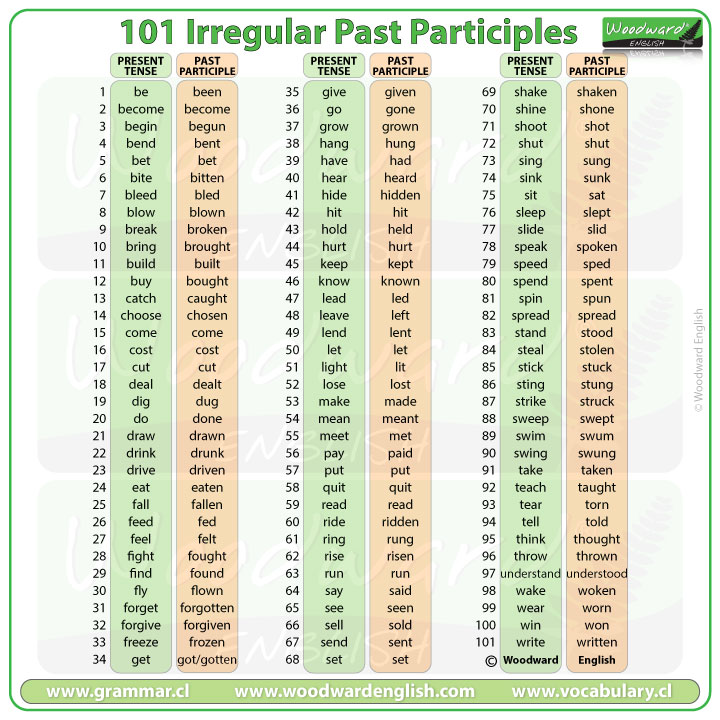
Irregular Past Participles in English Inglés Campus Virtual ORT
To See: V2 Past Simple: Saw: V3 Past Participle: Seen: V4 3rd Person Singular: Sees: V5 Present Participle/Gerund: Seeing: Irregular Verbs Following a Similar Pattern Verbs like: V1 Base Form V2 Past Simple V3 Past Participle; Foresee: Foresaw: Foreseen: Subscribe to Ad-Free Browsing.

Look Past Simple, Simple Past Tense of Look Past Participle, V1 V2 V3
Past participle of see. Past participle . seen [siːn] You are look at the page for irregular verb see. Participle of the irregular verb [see] The past participle is one of the most important parts of English grammar. It's used to express perfect tenses and to form the passive voice.
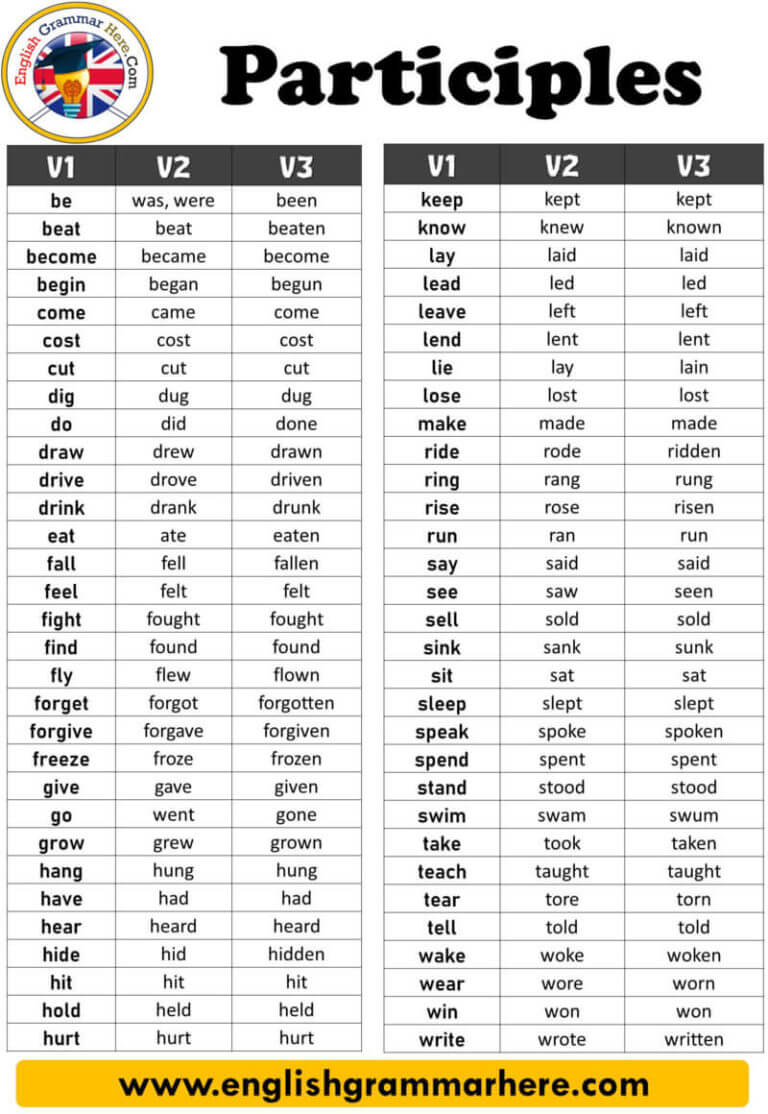
Participles, Definitions and Example Sentences English Grammar Here
What is the past tense of "see?". Most commonly, the past tense of the word "see" is "saw.". Although the word form will change based on its participle. And the sentence where it's used. For example, referencing "see" in the present participle form will change it to "seeing," but in the infinitive form, will be "see.".
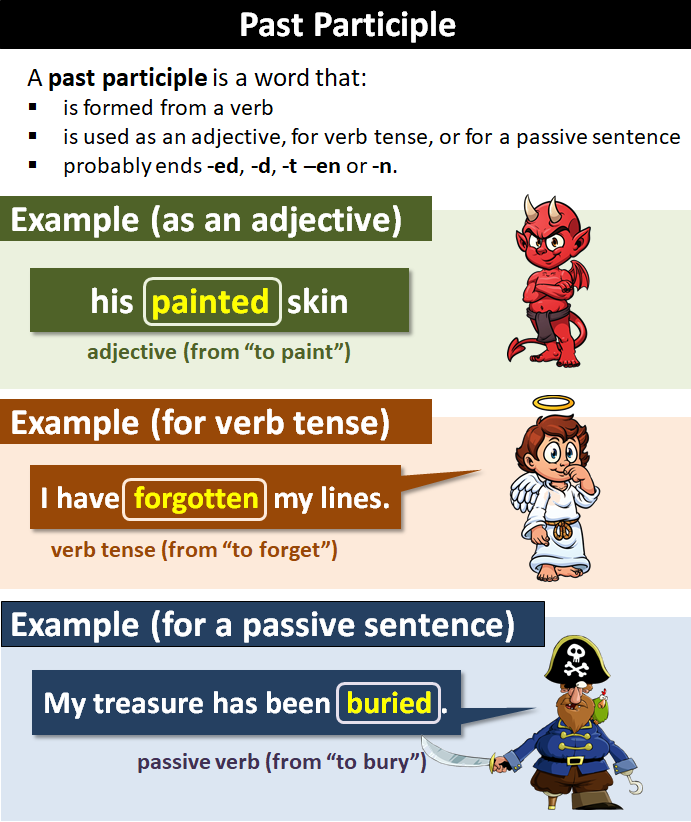
Past Participle Definition and Examples
A participle is a form of a verb used as either an adjective ("the hidden treasure") or a part of certain tenses ("we are hiding the treasure"). Participles have two different types, the present participle and past participle, and participles used as adjectives can form a longer participle phrase (" Hidden in the bushes, the treasure was hard to see").
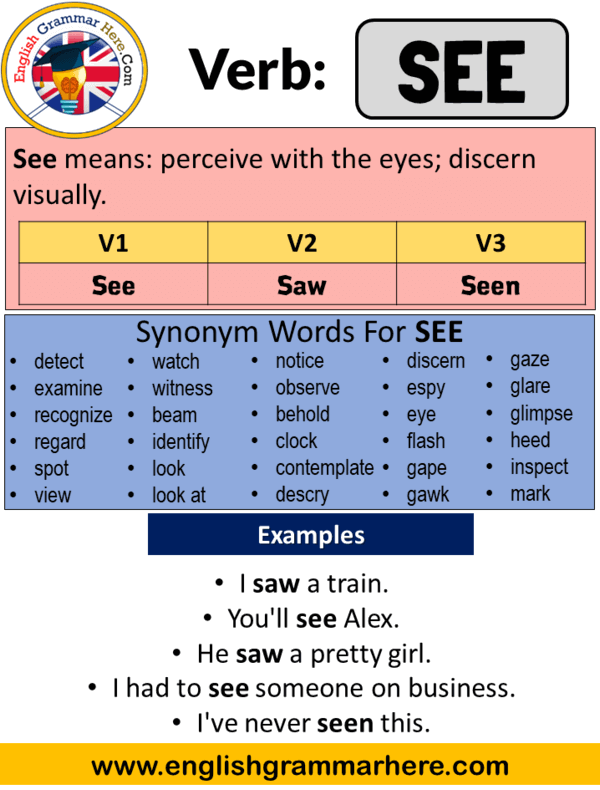
See Past Simple, Simple Past Tense of See Past Participle, V1 V2 V3
A past participle is a word derived from a verb that can be used as an adjective, to form perfect verb tenses, and to form the passive voice. It is one of two types of participles, along with present participles. The past participles of regular verbs are usually formed by adding the suffix "-ed" (e.g., "learn" becomes " learned ").
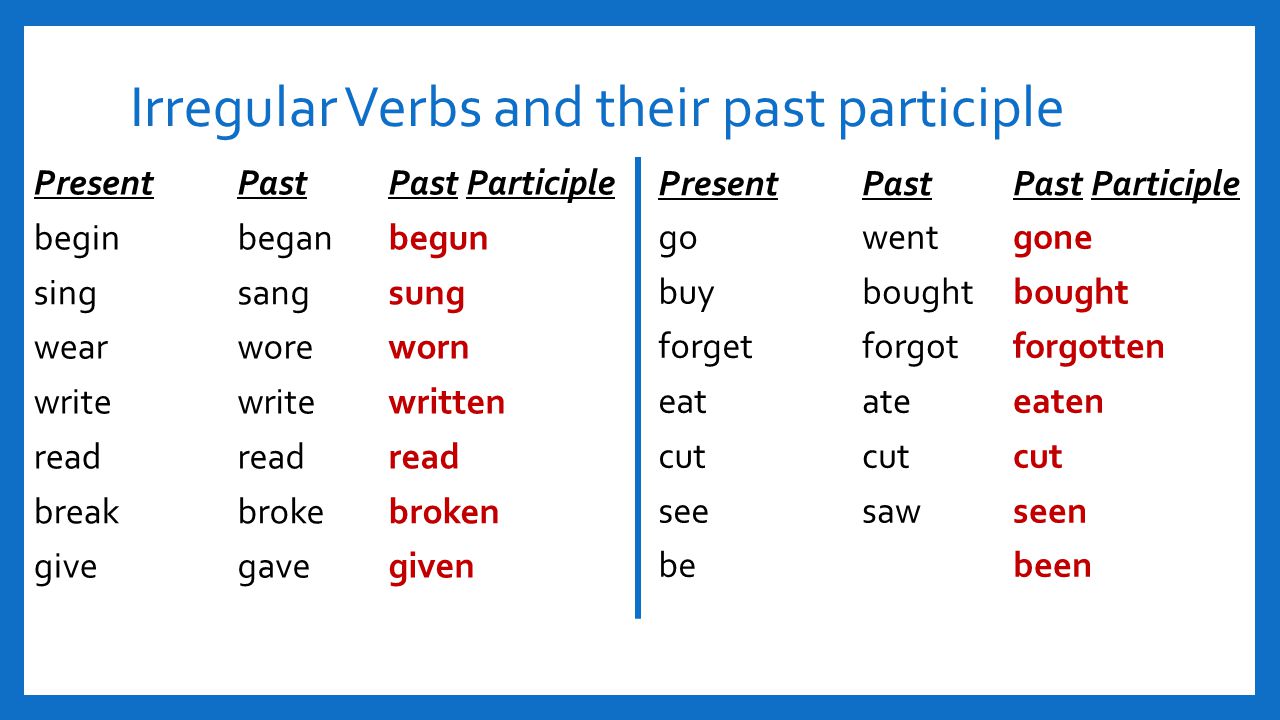
PAST PARTICIPLES & SENTENCES WITH ESTAR + PAST PARTICIPLES Quizizz
What is the past tense of "see?" Most commonly, the past tense of the word "see" is "saw" although the word form will change based on its participle.And the sentence where it's used. For example, referencing "see" in the present participle form will change it to "seeing," but in the infinitive form, will be "see.". Continue reading to learn more about the past tense.

Past Tense Of See, Past Participle Form of See, V1 V2 V3 Lessons For
V3 Past Participle. Since the verb 'see' is irregular, the V3 version used in conjunction with perfect tense is known as ' seen'. V3 is valid in times when verb forms are used, which are different from the past tense but can often be confused. Examples. Billy has seen a mouse once.
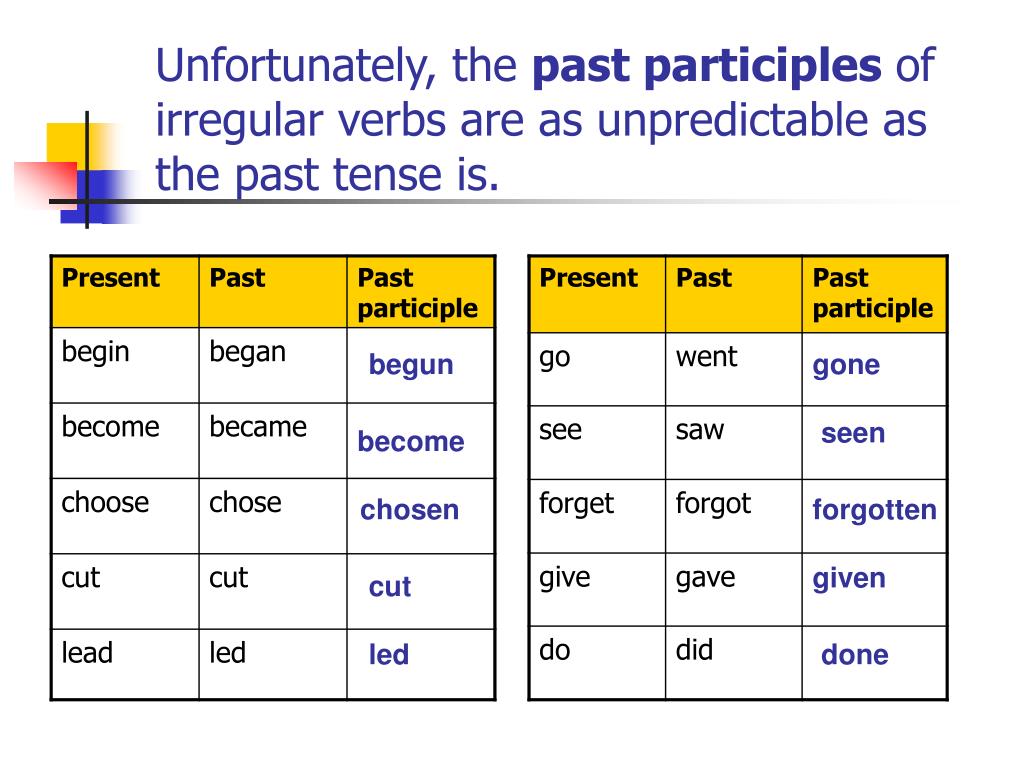
past participle tense 用法 Shophann
Table of irregular verbs - English Grammar Today - a reference to written and spoken English grammar and usage - Cambridge Dictionary

Past Participle Definition, Forming Rules and Useful Examples • 7ESL
Most Common Irregular Verbs. The two most common irregular verbs in English are "be" and "have." These pages give more details about these two verbs: the verb "to be". the verb "to have". Here are the next 10 most common irregular verbs in English: see (this page), say, go, come, know, get, give, become, find, and think.
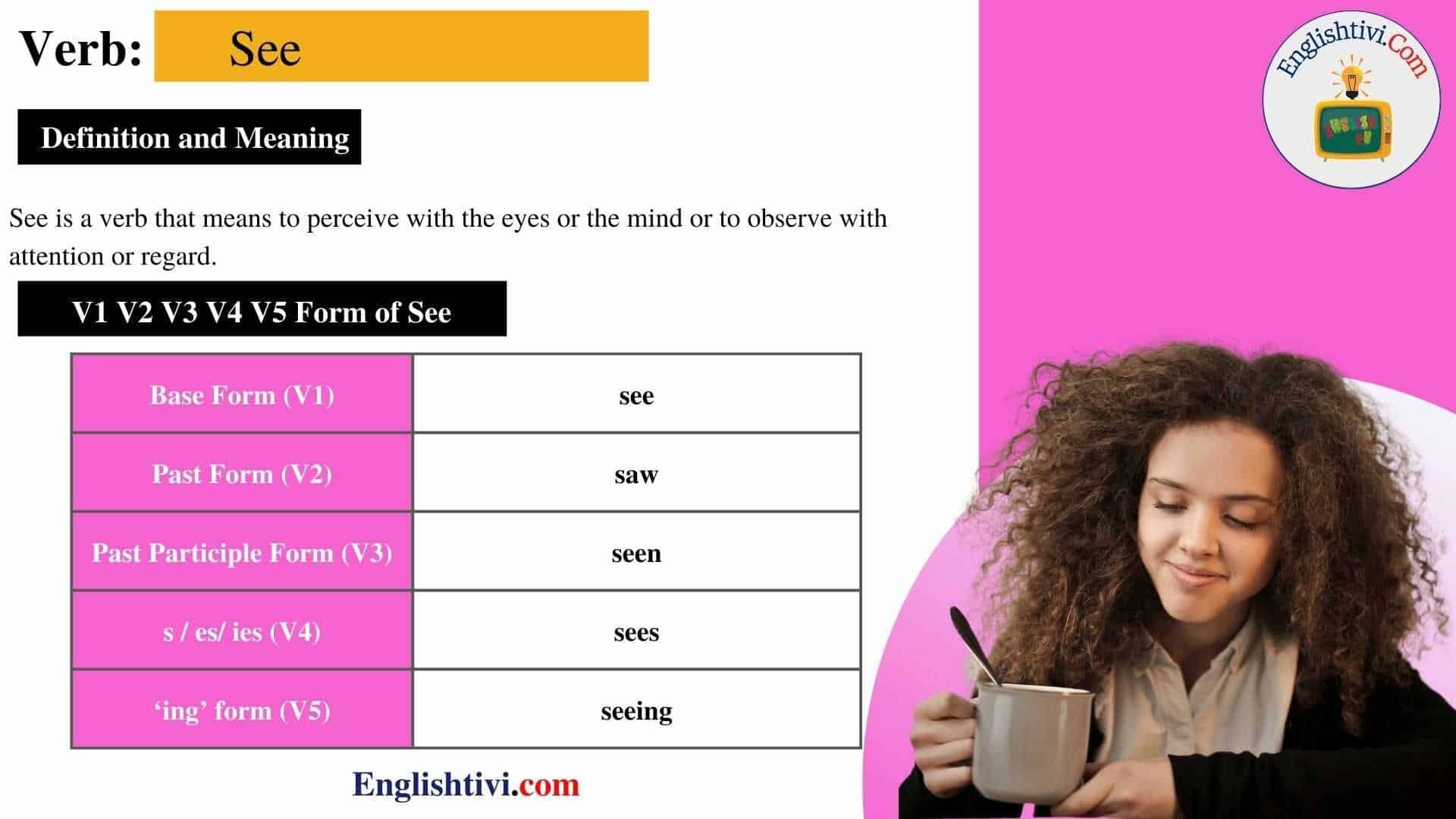
See Past Simple Simple Past Tense Of See Past Participle V1 V2 V3 Images
This is a reference page for see verb forms in present, past and participle tenses. Find conjugation of see. Check past tense of see here.. Present Participle Past Tense Past Participle; see: seeing: saw: seen: Conjugation of See. Simple / Indefinite Present Tense; He/She/It sees . I see. You/We/They see.

List of Past Participle Grammar Syntax
More verb past tense. Seek. Sell. Send. Sew. Shake. Saw is the past tense of the word see. Seen is the past participle of the word see. see past form, verb forms, v1v2v3, Infinitive.
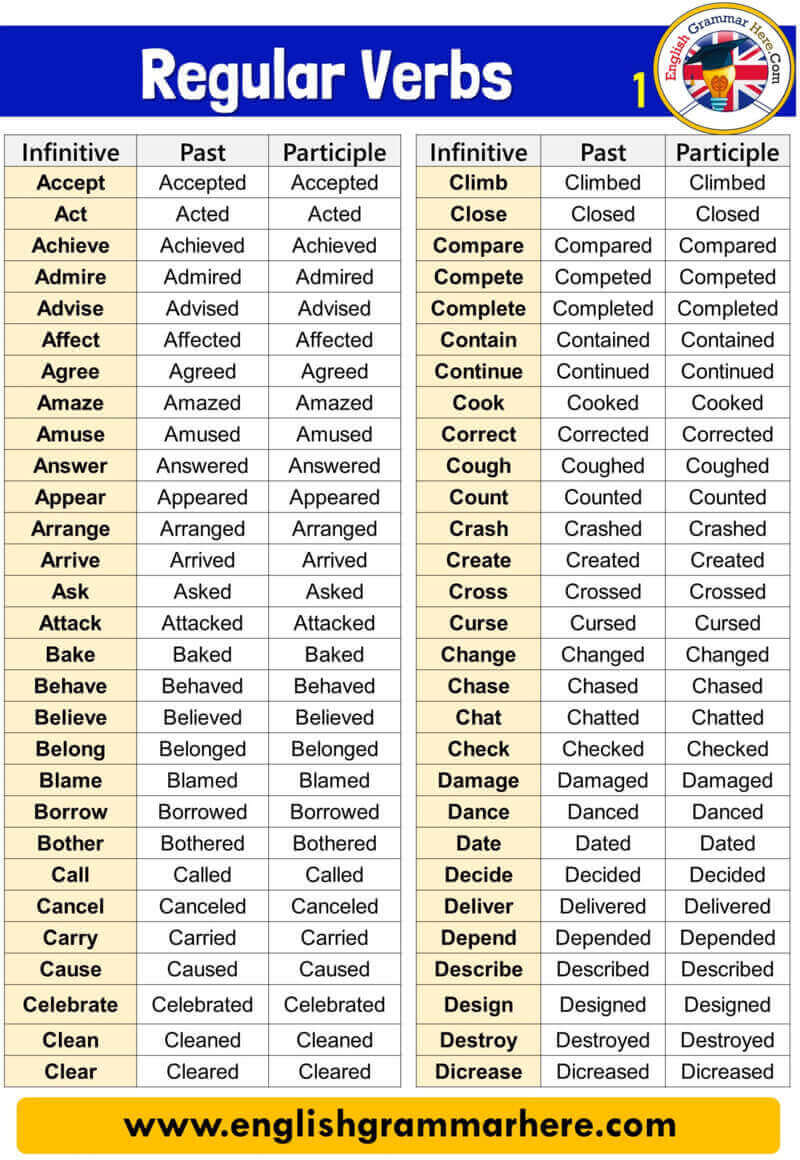
215 Regular Verbs, Infinitive, Past and Participle English Grammar Here
Conjugate the verb see in all tenses: present, past, participle, present perfect, gerund, etc.

1000 Verb List, Past and Past Participle, V1 V2 V3 List English Vocabs
See V1 V2 V3 V4 V5, Past Simple and Past Participle Form of See Verb; See Meaning; view, observe, sight, consider, see into V1, V2, V3, V4, V5 Form of See Base Form Past Form Past Participle see saw seen Base Form s/es/ies ing Form see sees seeing Synonym for See view observe sight consider see into understand figure out sense grasp fathom look look at overlook take a look at discuss meet talk.